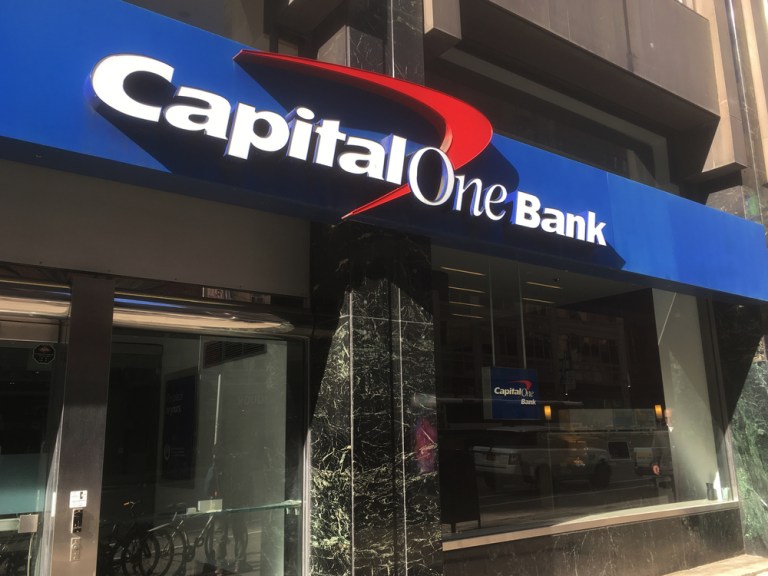
Capital One logged stronger than expected results when it posted its earnings yesterday — the growth was driven largely by rising interest rates and an uptick in its largest lending categories, cars and cards.
“The competitive marketplace remains intense, but generally rational. Supply of card credit is on the high side, although it has settled out a bit. We continue to see good opportunities to grow card loans and purchase volumes with a watchful eye on the marketplace,” Captial One CEO and Chairman Richard Fairbank told analysts on the post-earnings call.
The market reaction to the earnings report was mixed — stocks popped up about 2 percent in after hours trading, though that result fell off over night.
By The Numbers
Capital One reported net income up 71 percent to $1.3 billion from a year earlier. Earnings per share clocked in at $2.64 — a significant 35 cent beat on the 29 cents better than the $2.35 predicted by analysts ahead of the release.
Card lending — the business that Capital One is best known for — was up 8 percent to $108 billion, while auto loans were up 10 percent to $55 billion.
Residential mortgages, however, dropped sharply by 20 percent — a not entirely shocking outcome, given that the bank announced that it is leaving the mortgage business a year ago and has been winding that part of the business down ever since.
Charge-offs for the quarter were once again up — an increase of 5.26 percent, up 12 basis points year over year. But, viewed from another angle, the 30-day-plus delinquency rate at quarter end was 3.57 percent, down 14 basis points year on year.
Total loans held for investment were up 3 percent, to $248 billion. Interest earnings assets also saw their average balance tick up — up 4 percent to $330 billion — with the average yield on those assets up 41 basis points to 8.04 percent.
“In the first quarter, Capital One delivered year-over-year growth in loans, deposits, revenues, and pre-provision earnings. We tightly managed costs even as we continue to invest to grow and to drive our digital transformation. Total company ending loan balances grew 3% year-over-year and we still see opportunities to book attractive and resilient loans in our card, auto, and commercial banking businesses,” Fairbank noted.
What’s Next
During the Q&A period, Fairbank faced questions that dialed down more specifically on the firm’s growth over time — Credit Suisse wondered what Fairbank thought the future of the card markets was gong to look like, given what Fairbank referred to as “potential over-supply” early in his remarks. Fairbank noted that between 2014 and 2016 Capital One — and much of the rest of the market — had seen a massive surge in credit supply to consumers.
That era, he says, is clearly easing off, though there is still growth to look forward to.
“I would call it kind of a settling out period. I think we see an opportunity for attractive growth in this environment, not like a big surge like before, but I think that we still feel optimistic about the ability to have appropriate attractive growth.”
Fairbank also noted that while consumer credit health looks healthy in the near term, with low unemployment and the tax cuts rolling through the economy, the longer term is a bit more uncertain.
“When you look out a little bit farther, there are a number of things that are still considered concerning like growing consumer indebtedness, growing the government deficits and a number of issues, but almost all the issues are a bit farther out.”